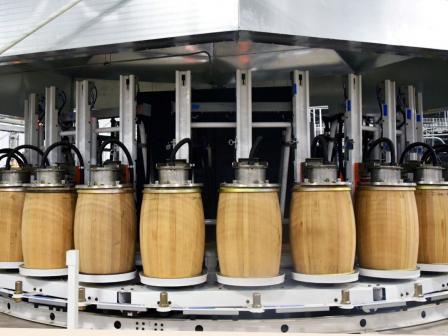
Archived Content
This site contains information that has been considered archived and will no longer be updated.
EDA Brings a New Spirit to West Virginia
White Sulphur Springs is a city in southeastern West Virginia, about two hours from Charleston. According to the U.S. Census Bureau, it is home to approximately 2,400 people, as well as the famed Greenbrier Resort. For several generations, it was a coal community, but like other parts of the state, it must now redefine itself.
In addition to the economic downturn in coal, White Sulphur Springs suffered a natural catastrophe in 2016, when historic flooding destroyed much of the town and took the lives of 17 citizens in and around the area. Like the rest of America, the town also suffered great personal and economic loss as a result of the coronavirus pandemic.
In 2018, the Economic Development Administration awarded a grant of $1.6 million to the town for infrastructure improvements to help facilitate its long-term economic recovery. The centerpiece of this award was the establishment of a new commercial enterprise to help diversify the local economy.
The West Virginia Great Barrel Company (WVGBC) opened its doors the following year. Applying state-of-the-art manufacturing methods, including the world’s first fully automated Windlass and Truss Hoop Puller, the company is one of the most technologically advanced providers of barrels to the spirits industry, now serving a worldwide market.
When the plant first opened, it was projected to generate fifty badly needed positions for the community, but today it employs eighty. The jobs didn’t stop there, however. In order to accommodate the increased demand for the raw materials used in barrel production, including the company’s signature white oak, an associated wood products mill, Audra Lumber, increased its capacity and hired an additional thirty employees. This served neighboring Monroe County, home to the lumber mill, which was also reeling from the economic impact of the downturn in coal and the 2016 flood.
The new workers needed homes to call their own, and the local housing market production received a significant boost as well. Additionally, a local health facility was able to benefit by WVGBC employees taking advantage of the company’s health program, which stabilized the fitness center’s workforce needs while enhancing the factory employee’s health benefits package.
Local infrastructure was also improved in support of the new industry, including access to broadband technology for the lumber facility, funded through a supplemental government grant. Additionally, an improved wastewater system was required as well as a new industrial access road, both of which received funding at the state level.
While these developments have been essential to the town’s economic recovery, White Sulphur Springs still has a long way to go in order to return to the days when coal was king. The town is highly adaptable however, pivoting as required and creating new industries as needed. The town also looks towards increased tourism as another economic recovery driver, an initiative supported by EDA as well.
